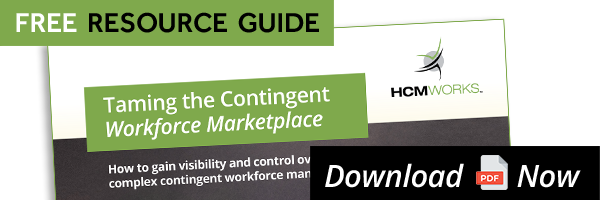With the rise of the contingent workforce in North America, employers are starting to realize the value of hiring independent contract workers. The appeal of low cost, specialized skills, and flexibility makes contingent labor a beneficial option for many companies—but with more than just a few contractors, is it manageable? When you employ independent workers you have a lot more risk and liability to consider than you do with permanent full-time employees. There are many benefits to maintaining a contingent workforce, however it’s important to be aware of all of the issues a company needs to consider before implementing this process. Here are a few tips on how to effectively manage contingent workers.
Staffing Firms
When sourcing talent for your company, make sure you leave it to the staffing firm to recruit, screen, select, and assign workers. Don’t be directly involved in the hiring process. Since the staffing firm is the payroll employer, let them determine the exact wages and benefits of the assigned contractors. You and your firm can agree on the bill rates to be paid. Also, while you want independent contract workers to be clearly separate from full-time employees include them in your business and social events, barring any events that are specifically related to full-time employees. Have the staffing agency handle the invitations. Leaving these tasks to the agency will help maintain the highest level of professionalism as well as keep things running smoothly and efficiently.
Distinguish Contingent Employees
This is where things can get a bit tricky. In order to successfully manage contingent workers you must acknowledge that they are not your permanent employees, but instead self-employed contractors who work on a temporary basis without receiving any company benefits. This is not an issue that is taken lightly, as it can result in serious legal repercussions if ignored. Because of the fact that contingent workers do not receive the same pay or benefits as your other employees, the contingent workers won’t be on payroll, which means you have to go through a separate process to ensure they are paid fairly. The dilemma here is that handling the payments of workers who are paid different rates on different schedules can be challenging. The more contingent workers you have, the more difficult this task becomes, but it is essential that employers do a thorough job of identifying and distinguishing contract workers.
Data Management Systems
Another important element of managing contingent workers is using a data management system for your convenience. This could be a Vendor Management System, an HR system, or stand-alone programs. Integrated data systems are used to ensure worker payment is prompt as well as protect employers from compliance violations. Data management systems also track performance and cost metrics, enabling employers to negotiate better rates.
Basic tracking tools are offered by many human resources to keep track of their contingent workforce numbers, as well as to obtain more detailed management options like vendor management systems (VMS). A VMS is an automated software system that companies use to track suppliers, temps, and contract labor. Most of these systems are cloud-based and offer tools to track time and deliverables, as well as analytics and forecasting features. These are great features to have as they allow companies to manage contingent labor costs and improve operations. The ability to track and evaluate performance lets employers focus on the highest skill level and offer negotiations and better pay rates. These systems can help you create budgets and plans that will be very effective in the future.



